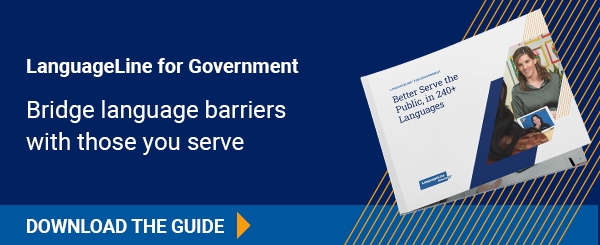
Texas, a state renowned for its diversity, is experiencing a surge in languages spoken throughout its communities. According to census data, a staggering 35 percent of homes in Texas now use languages other than English. This growing need for multilingual communication is prompting counties to step up and ensure residents can access essential services in their preferred language.
The Rise of Multilingual Services in Texas
The 2020 census served as a wake-up call for Fort Bend County. Not only were they the most diverse county in Texas, but also one of the most diverse in the nation.
"For our residents coming in [to county offices], we realized that some of them were having difficulty communicating,” County Clerk Laura Richard said.
This realization sparked a change. Today, Fort Bend County leverages LanguageLine to offer court and legal services in a whopping 240 languages.
Residents visiting clerks’ offices are greeted with signage showcasing commonly spoken languages in the region. For interpretation of the spoken word, language selection is made simple through a card system and two-way handsets are used to connect with professional LanguageLine interpreters in more than 240 languages.
These free and confidential services empower residents to navigate important tasks like obtaining marriage licenses, birth certificates, or resolving legal matters. While services are currently limited to in-office visits, County Clerk Richard envisions expanding accessibility to remote services in the future.
El Paso County: Embracing Diversity Through iSpeak915
El Paso County paints a similar picture. Roughly 25 percent of its residents have limited English proficiency. Spanish is the primary non-English language, followed by languages like German, Arabic, and Tagalog. Lorey Gonzalez-Flores, program manager for the county's Office of New Americans, attributes this growth to nearby Fort Bliss. Military personnel stationed there often choose to build families and establish roots in El Paso.
Leveraging funds from the American Rescue Plan Act, El Paso County is implementing a program akin to Fort Bend's and is utilizing LanguageLine. Residents visiting county offices have the option to select their preferred language on iPads and connect with a live interpreter to conduct essential county business. As in Fort Bend, this service is available in more than 240 languages.
The program is aptly named "iSpeak915" after El Paso's area code.
"We want people in all the towns in the area – from Horizon to Anthony – to feel included, not just those in El Paso,” Gonzalez-Flores said.
The Office of New Americans is actively working to bridge the gap further. Key county documents across departments are being translated to ensure residents are informed about critical programs. Additionally, social media outreach is being amplified by translating posts into Spanish to reach a wider audience.
"Many people come to El Paso and end up staying because it truly is a very welcoming place," Gonzalez-Flores said. "El Paso is already known for this, but we want to put it on paper, formalize it and be more intentional in the services that we are providing."
LanguageLine Is Your Partner in Building Inclusive Communities
LanguageLine Solutions is proud to play a vital role in ensuring all residents have equal access to essential services. Whether in Fort Bend County, El Paso County, or anywhere across North America, LanguageLine helps bridge the communication gap and empowers communities to thrive.
Contact LanguageLine today to learn more about how we can help your county or organization deliver multilingual services through our professional interpretation and translation services.





